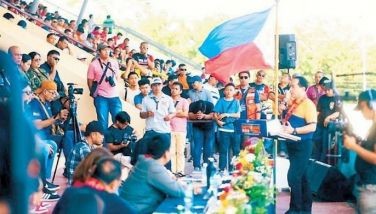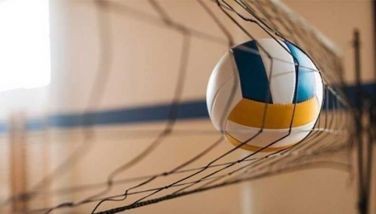Duterte can handle Cabinet members with different stances – analysts
QUEZON CITY, Philippines (The Filipino Connection) — Businesspeople. Academics with differing ideologies. Representatives of the Philippine Left. Retired police and military officers. Lesser-known personalities. Not surprisingly, some presidential friends.
These tags of the Cabinet members of plurality President Rodrigo Duterte have left people wondering how the newly-sworn 16th Philippine president will handle all of them.
A test case had been made with new Environment Secretary Regina Lopez. This known advocate against mining had already tumbled the stock prices of mining companies, and some of Lopez’s fellow newly-appointed Cabinet members remarked she is just one voice in the Cabinet.
The Philippines remains to run a presidential system of government, in which Cabinet members are appointed and are accountable to the Chief Executive. As for Congress, given Duterte’s landslide victory, his three-person political party PDP-Laban had welcomed other political parties (like outgoing President Beningo Simeon Aquino III’s Liberal Party and the Nacionalista Party) as members of a coalition.
“This is post-PDAF (Priority Development Assistance Fund) presidency,” says Dr. Jean Encinas-Franco of the University of the Philippines’ Department of Political Science, with reference to the pork barrel scam that had led to the removal of the PDAF in congresspeople’s budgets. “It is interesting to find out what Duterte’s bargaining chips were to the people who joined his coalition. In the absence of a solid political party, the president is constrained to use other informal resources to broaden his or her coalition.”
But the Cabinet composition intrigues, and some political analysts think Duterte can handle all of them and their leanings.
For all you know, Action for Economic Reforms (AER) Coordinator Filomeno Sta. Ana III thinks, the appointed Cabinet members may have been “co-opted” already by Duterte. Thus, the appointed Cabinet member, economist Sta. Ana thinks, “now has constraints” in advancing his or her interests.
“At first glance, you would think Duterte’s Cabinet will implode. Is he crazy? Such make-up of the Cabinet is a boldstroke,” Sta. Ana tells The Filipino Connection.
Sta. Ana’s views are tied to the efforts of Duterte to forge peace with insurgency groups, especially since he gave the Communist Party of the Philippines-National Democratic Front (CPP-NDF) slots to his Cabinet. These were given to academic Judy Taguiwalo (Department of Social Work and Development) and farmers’ advocate Rafael Mariano (Department of Agrarian Reform).
“You can’t have your cake and eat it too,” says Franco. “They (appointed Cabinet members form different sectors) might try their very best to include their own framework based on their ideological leanings. But these have to be balanced with the needs of the country.”
Political scientist Jose Antonio Cheibub of the University of Illinois at Urbana-Champaign, in a paper on parliamentary and presidential democracies, wrote that coalitions in presidential regimes “are thought be rare… due to the fact that nothing in the system would provide the incentives for individual politicians and their political parties to cooperate with one another and the government.”
Coalition governments are common in European countries, with Cabinet members belonging to different political affiliations. Some political scientists also think handling coalition governments also have their costs and challenges in managing conflicts.
While Cheibub’s view is aligned to political personalities, Duterte’s approach to his Cabinet is multi-sectoral in that leaders from various sectors, not just political parties, are together.
But Chiebub junks the idea that coalition building in presidential systems may be a “misguided” idea as the propensity to form these coalitions “increases in both parliamentary and presidential regimes when the number of political parties increases.” A context here in the Philippines is the tolerance to a multi-party system, and new presidencies lead to coalition building by political parties.
An inclusive Cabinet make-up may also be a come-on to the public to try and appreciate Duterte’s governance approach, Franco said.
Duterte may be strategic, adds Sta. Ana, in the sense that his simple reason is that “he wants peace.”
“That will be a big legacy,” Sta. Ana adds. “Expect tensions but Duterte is willing to make it so that such cause leads him to reaching his strategic objective that, in the long term, will be good for our society.”
On the operational side of handling these varied personalities, Sta. Ana and Franco think the tough-talking Duterte can manage them. I think, Sta. Ana says, Duterte can handle a co-existence by these Cabinet personalities. “If this group threatens to implode, I think he can handle the situation.”
An asset of Duterte, Franco thinks, is his decisiveness. And since the newly-appointed Cabinet members think Duterte is a no-nonsense leader, “they want to prove to him they’re as decisive in governing their own departments.”
The best thing for Duterte is to present “very clear policy directions,” Franco says, so that Cabinet members with “different ideological persuasions can follow these directions as alter-egos of the president.”
***
Jeremaiah M.Opiniano is the publisher of The Filipino Connection, regional partner of Philstar.com
- Latest
- Trending
































